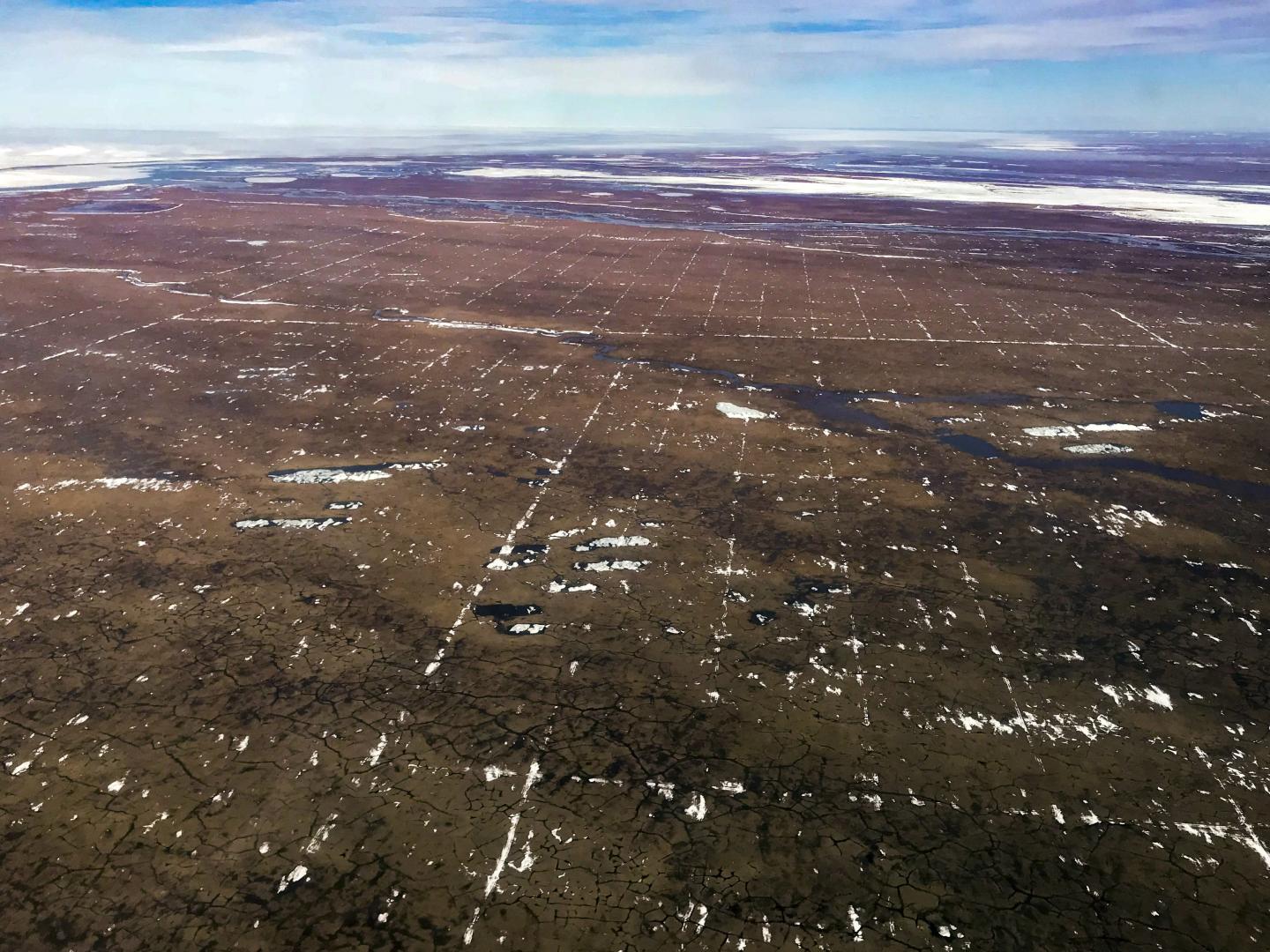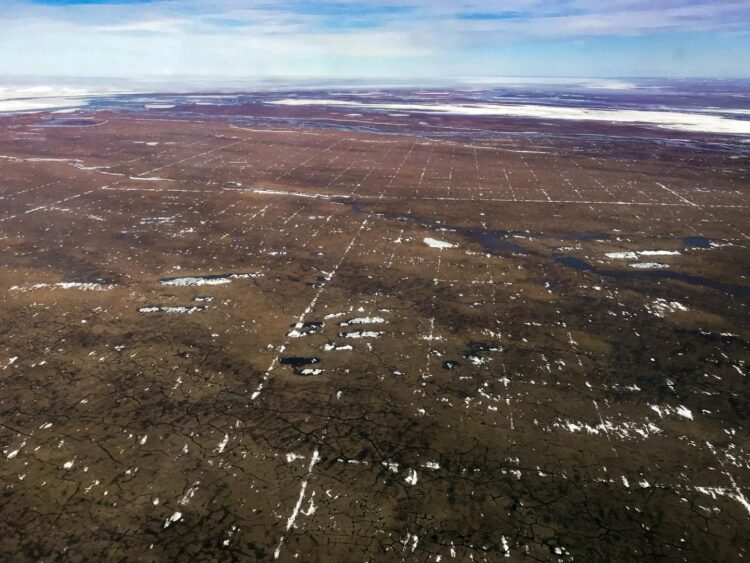
Credit: Photo by Matt Nolan
Winter vehicle travel can cause long-lasting damage to the tundra, according to a new paper by University of Alaska Fairbanks researchers published in the journal Ecological Applications.
Scars from seismic surveys for oil and gas exploration in the Arctic National Wildlife Refuge remained for decades, according to the study. The findings counter assertions made by the Bureau of Land Management in 2018 that seismic exploration causes no “significant impacts” on the landscape. That BLM determination would allow a less-stringent environmental review process of seismic exploration in the Arctic Refuge 1002 Area.
UAF’s Martha Raynolds, the lead author of the study, said she and other scientists have documented lasting impacts of winter trails throughout years of field research. Their paper, authored by an interdisciplinary team with expertise in Arctic vegetation, snow, hydrology and permafrost, summarizes what is currently known about the effects of Arctic seismic exploration and what additional information is needed to effectively regulate winter travel to minimize impacts.
A grid pattern of seismic survey lines is used to study underground geology. These trails, as well as trails caused by camps that support workers, damage the underlying tundra, even when limited to frozen, snow-covered conditions. Some of the existing scars on the tundra date back more than three decades, when winter 2D seismic surveys were initiated. Modern 3D surveying requires a tighter network of survey lines, with larger crews and more vehicles. The proposed 1002 Area survey would result in over 39,000 miles of tracks.
“Winter tundra travel is not a technology that has changed much since the ’80s,” said Raynolds, who studies Arctic vegetation at UAF’s Institute of Arctic Biology. “The impacts are going to be as bad or worse, and there are proposing many, many more miles of trails.”
Conditions for winter tundra travel have become more difficult, due to a mean annual temperature increase of 7-9 degrees F on Alaska’s Arctic coastal plain since 1986. Those warmer conditions have contributed to changing snow cover and thawing permafrost. The impact of tracks on the vegetation, soils and permafrost eventually changes the hydrology and habitat of the tundra, which affects people and wildlife who rely on the ecosystem.
The paper argues that more data are needed before proceeding with Arctic Refuge exploration efforts. That includes better information about the impacts of 3D seismic exploration; better weather records in the region, particularly wind and snow data; and high-resolution maps of the area’s ground ice and hydrology. The study also emphasizes that the varied terrain and topography in the 1002 Area are different from other parts of the North Slope, making it more vulnerable to damage from seismic exploration.
###
Other contributors to the paper included UAF’s Mikhail Kanevskiy, Matthew Sturm and Donald “Skip” Walker; Anna Liljedahl, UAF and Woods Hole Research Center; Janet Jorgenson, U.S. Fish and Wildlife Service; Torre Jorgenson, Alaska Ecoscience; and Matthew Nolan, Fairbanks Fodar.
Media Contact
Jeff Richardson
[email protected]





